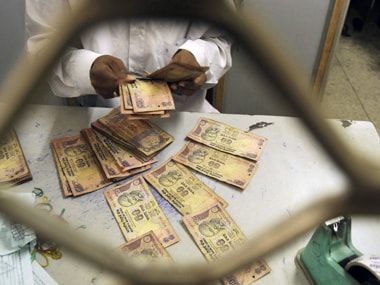Finally, the Narendra Modi-government is on the verge of making the Bankruptcy Code a reality. The Lok Sabha has cleared the Bill and it now has to go through the Upper House. Given that there is already a consensus on the proposed Law, there shouldn’t be any problems in Rajya Sabha too. [caption id=“attachment_2192907” align=“alignleft” width=“380”]  Reuters[/caption] What it is all about: It’s a law that would enable banks to push for resolution/recovery of the money from a troubled company within a period of 180 days, with a grace period of another 90 days if majority (75 per cent) of creditors agrees. If the recovery doesn’t happen even then, the company will be liquidated automatically. Presently, recovering money from a defaulted corporate borrower is a nightmare for bankers since it takes years for the Debt Recovery Tribunals (DRTs) to finish the litigation. Promoters typically drag banks to various other courts to delay their payments. By the time, the whole process gets over, there will be nothing left for banks to recover. The underlying value of the assets would have eroded sharply by then. It is not clear whether the new bankruptcy law allows a defaulted debtor to move to a higher court against the lenders. If yes, things aren’t going to be different. No dearth of good laws But, the key point here is that in this country there has been no dearth of good laws. As Munesh Khanna, Partner – PwC India, says in this article, the proof of the pudding would lie I its execution. “India has the strongest laws on environment, road safety and others, but it’s also important how we implement them," Khanna says. That precisely summarizes the problem. Remember, even the existing DRT mechanism was brought in to make possible faster resolution of banker-borrower disputes since the general judicial platforms lacked the infrastructure and expertise to deal with complex financial litigations between a lender and borrower. But, the DRT has clearly failed to do what it was supposed to do on account of its slow-paced approach. The point here is that even though the new law is in place, its success depends on how conducive is our legal system to support the execution of the Law and how fast banks can exercise their rights. Look at the Vijay Mallya-Kingfisher case. Banks have been fighting this case with the liquor baron in different courts (DRTs, High Courts and Supreme Courts), but even after 4 years of default, there has been no meaningful progress on recovery. Quicker judicial resolution The expert panel, headed by former law secretary, T K Vishwanathan, has highlighted the inefficacies of the existing mechanism when it said the loan recovery rates obtained in India are among the lowest in the world. When default takes place, broadly speaking, lenders seem to recover 20 percent of the value of debt. The proposed bankruptcy law, which will replace The Presidency Towns Insolvency Act, 1909, when enacted, would come handy for banks to deal with future cases. However, a big question remains with respect to the existing stock of bad loans, where recovery from corporations pending for several years. It’s not clear whether the new code can apply to existing cases, which are currently in DRTs. A major challenge faced by the banks at this stage is how to repair their cracked balance sheets (About 11per cent of bank loans are in the stressed category). Also, speeding up the process of liquidation in a few months too would be a task for banks since lenders typically find it difficult to sell the assets quickly and recover their dues, simply because there aren’t many takers for distressed assets. The Vishwanathan panel, in its report, has observed the challenges judicial intervention poses to the recovery process. “The current state of the bankruptcy process for firms is a highly fragmented framework… In a situation where one forum decides on matters relating to the rights of the creditor, while another decides on those relating to the rights of the debtor, the decisions are readily appealed against and either stayed or overturned in a higher court. Ideally, if economic value is indeed to be preserved, there must be a single forum that hears both sides of the case and make a judgement based on both.” Further, the panel also questions the business and financial expertise of the judicial forum that decides on the insolvency process. “The fora entrusted with adjudicating on matters relating to insolvency and bankruptcy may not have the business or financial expertise, information or bandwidth to decide on such matters. This leads to delays and extensions in arriving at an outcome, and increases the vulnerability to appeals of the outcome,” the panel observed. Speedy judicial resolution in insolvency cases is crucial since a company’s cash flows are already hit when it negotiates with banks on insolvency process. According to a 2014 World Bank report, the average time to resolve insolvency is four years in India, compared with 0.8 in Singapore and one year in London. The bottomline is this: Bankruptcy Code can certainly help banks not to repeat episodes such as Kingfisher and Winsome Diamonds. But, does we have the infrastructure to execute the new Bankruptcy Law is the big question.
It’s a law that would enable banks to push for resolution/recovery of the money from a troubled company within a period of 180 days, with a grace period of another 90 days if majority (75 per cent) of creditors agrees.
Advertisement
End of Article


)

)
)
)
)
)
)
)
)



